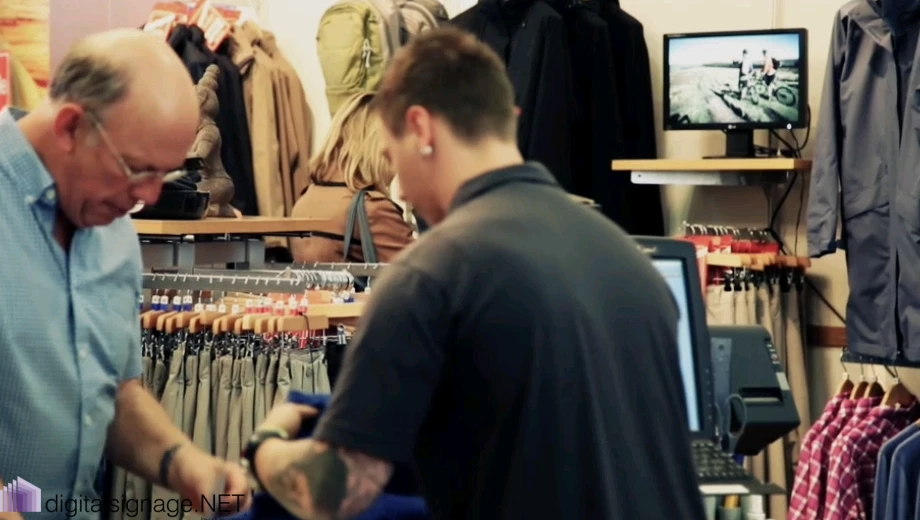
Partner Article
Is the end of physical retail nigh?
The recent downfall of HMV and Jessops made us all realise that the end of traditional retailing is perhaps nearer than previously believed. And Marc Andreessen, the co-founder of Netscape predicts the absolute death of physical retailers and the thriving of ecommerce sites that face neither the high costs of real estate nor those of inventories that their brick-and-mortar counterparties do. Nonetheless, many e-tailers took what it may seem a bewildering decision and opened physical stores.
The latest example is that of an American clothing brand Bonobos, once a pure e-commerce player, that opened a few (indeed very few) showrooms or guideshops as they call them where they don’t sell any products as such but help customers choose the right size & style of clothing for which shop assistants will place an order online (via tablets, of course). As expected, this experience is pricey but as a SAP consumer research revealed, ’‘customer service is the most influential factor in purchasing decisions’’[1] and not price.
The Location Based Marketing Association headed by Asif R. Khan does a great job in promoting the potential of place- based marketing channels for customer service and business, encouraging brick- and- mortar retailers to leverage one of their greatest advantages in the offline world- proximity to their clients.While much of the rhetoric of the LBMA is focused on the mobile- marketing side of the story, other in-store digital channels can be powerful tools in helping retailers stay afloat by enabling them to offer a superior customer experience.
Here are a few practical ways in which this could happen:
- Making deals, offers, discounts more visible and clear;
- Offering more relevant & accurate information to customers when they need it the most (i.e. car park location & fees, closing times etc.);
- Greeting customers as they enter the store/shop and make them feel valued;
- Allowing customers to scan codes on touchscreens or use the displays themselves to order items or get extra- information about them;
- Launching/ changing promotions in a timely manner to better respond to the latest trends, external conditions (see weather) and consumer demands;
- Notifying customers when a product is in low stock/ out-of-stock/ restocked;
- Combining digital posters with social media and sensorial marketing (colours, sounds/ music, scents) to provide a familiar, enjoyable and ludic environment that will encourage shoppers to stay for longer, come back more often and ultimately buy- either in-store or online.
It’s pretty obvious that retailers cannot stop show rooming from happening (people coming into the store just to look around) but what they can do is give consumers all the means and the reasons they need to buy their products- either in-store or online.
When talking about the prosperous future of the retail, Andresssen bets on the ecommerce retailers due to their ability to adjust their strategy far quicker than brick-and-mortar ones. Indeed updating a website takes a lot less time than a turnaround at JC Penney, as he rightly puts it. But if ’‘software eats retail’’ then it’s also the software that mends it.
Throughout the years digital signage software, like ours has provided retailers, such as Rohan featured in the video above, with a tool that allows them to disseminate timely communications across their stores, via digital screens. Promotions and adverts can be tweeked on the go to reflect external changes and errors can be easily corrected or avoided thanks to a centralised and instant transmission of data.
Seeing companies like Facebook migrating from virtual to physical raises doubts about the imminent ’‘death’’ of physical stores. As Nigel Vaz, SapientNitro’s MD explains in his article for Marketing Magazine (Next time it’s personal, MW, 23 January 2013) integrated, location- based services that close the gap between the uniform shopping experience taking place in store and the efficient but isolated one taking place online are setting the physical store for success in a ’’huge, digitally convergent way’’.
To learn more about digital media signage and their use in retail, please download Dynamax’s white paper
http://www.digitalsignage.net/digital-signage-for-retail/
or set up an account of digitalsignage.NET for FREE
http://www.digitalsignage.net/
About Dynamax
Dynamax Technologies are a leading digital signage software producer whose products power hundreds of interconnected displays delivering targeted advertising and information to over 30 million consumers every week worldwide. Throughout the years, their products have been used by media owners, Fortune Global 500 Corporations as well as SMB’s, colleges and UK train operating companies.
[1] Are you being served? The Marketer, November 2011
This was posted in Bdaily's Members' News section by Howard Smith .
Enjoy the read? Get Bdaily delivered.
Sign up to receive our popular morning National email for free.








 How to make your growth strategy deliver in 2026
How to make your growth strategy deliver in 2026
 Powering a new wave of regional screen indies
Powering a new wave of regional screen indies
 A new year and a new outlook for property scene
A new year and a new outlook for property scene
 Zero per cent - but maximum brand exposure
Zero per cent - but maximum brand exposure
 We don’t talk about money stress enough
We don’t talk about money stress enough
 A year of resilience, growth and collaboration
A year of resilience, growth and collaboration
 Apprenticeships: Lower standards risk safety
Apprenticeships: Lower standards risk safety
 Keeping it reel: Creating video in an authenticity era
Keeping it reel: Creating video in an authenticity era
 Budget: Creating a more vibrant market economy
Budget: Creating a more vibrant market economy
 Celebrating excellence and community support
Celebrating excellence and community support
 The value of nurturing homegrown innovation
The value of nurturing homegrown innovation
 A dynamic, fair and innovative economy
A dynamic, fair and innovative economy